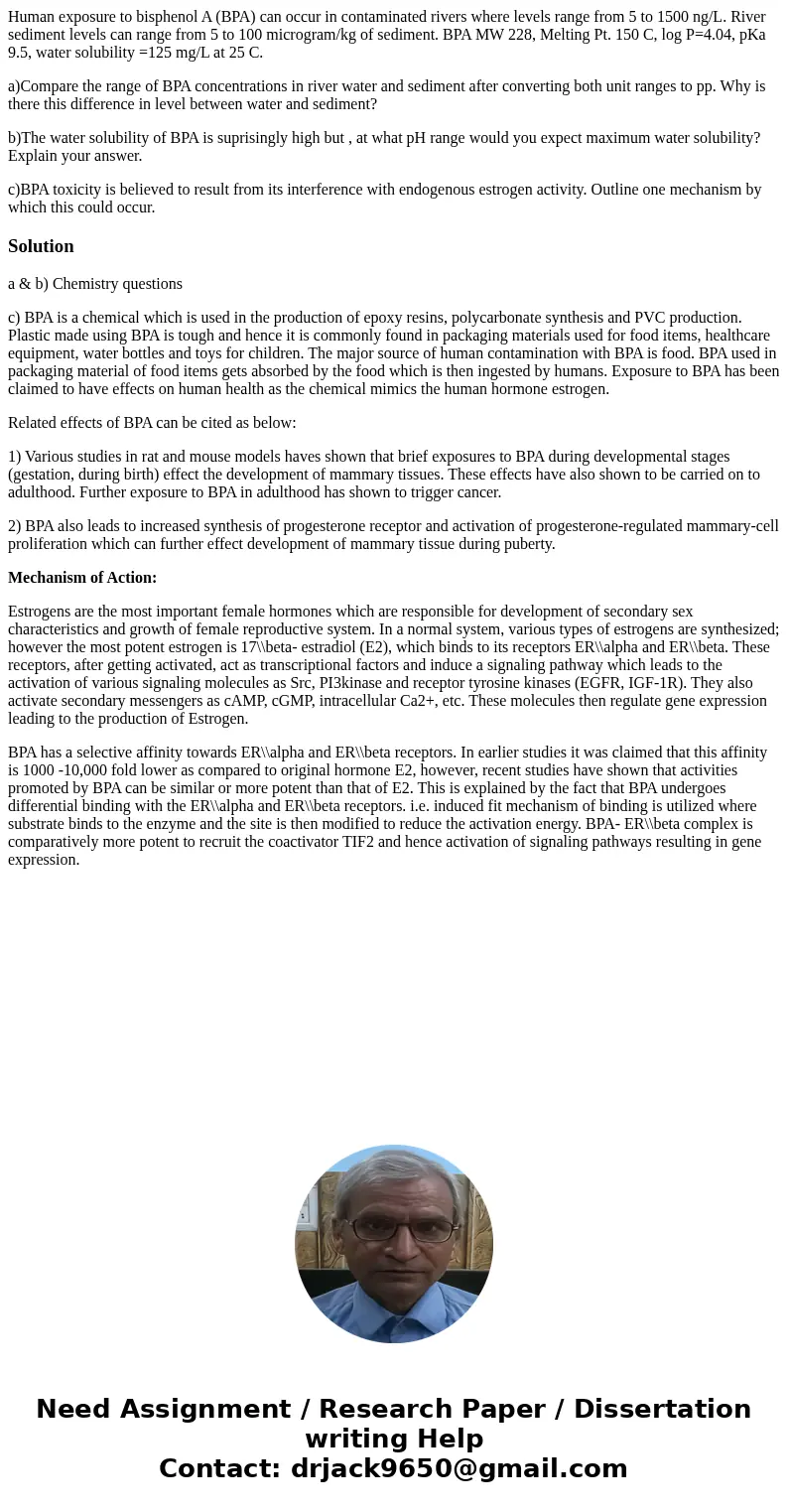Human exposure to bisphenol A BPA can occur in contaminated
Human exposure to bisphenol A (BPA) can occur in contaminated rivers where levels range from 5 to 1500 ng/L. River sediment levels can range from 5 to 100 microgram/kg of sediment. BPA MW 228, Melting Pt. 150 C, log P=4.04, pKa 9.5, water solubility =125 mg/L at 25 C.
a)Compare the range of BPA concentrations in river water and sediment after converting both unit ranges to pp. Why is there this difference in level between water and sediment?
b)The water solubility of BPA is suprisingly high but , at what pH range would you expect maximum water solubility? Explain your answer.
c)BPA toxicity is believed to result from its interference with endogenous estrogen activity. Outline one mechanism by which this could occur.
Solution
a & b) Chemistry questions
c) BPA is a chemical which is used in the production of epoxy resins, polycarbonate synthesis and PVC production. Plastic made using BPA is tough and hence it is commonly found in packaging materials used for food items, healthcare equipment, water bottles and toys for children. The major source of human contamination with BPA is food. BPA used in packaging material of food items gets absorbed by the food which is then ingested by humans. Exposure to BPA has been claimed to have effects on human health as the chemical mimics the human hormone estrogen.
Related effects of BPA can be cited as below:
1) Various studies in rat and mouse models haves shown that brief exposures to BPA during developmental stages (gestation, during birth) effect the development of mammary tissues. These effects have also shown to be carried on to adulthood. Further exposure to BPA in adulthood has shown to trigger cancer.
2) BPA also leads to increased synthesis of progesterone receptor and activation of progesterone-regulated mammary-cell proliferation which can further effect development of mammary tissue during puberty.
Mechanism of Action:
Estrogens are the most important female hormones which are responsible for development of secondary sex characteristics and growth of female reproductive system. In a normal system, various types of estrogens are synthesized; however the most potent estrogen is 17\\beta- estradiol (E2), which binds to its receptors ER\\alpha and ER\\beta. These receptors, after getting activated, act as transcriptional factors and induce a signaling pathway which leads to the activation of various signaling molecules as Src, PI3kinase and receptor tyrosine kinases (EGFR, IGF-1R). They also activate secondary messengers as cAMP, cGMP, intracellular Ca2+, etc. These molecules then regulate gene expression leading to the production of Estrogen.
BPA has a selective affinity towards ER\\alpha and ER\\beta receptors. In earlier studies it was claimed that this affinity is 1000 -10,000 fold lower as compared to original hormone E2, however, recent studies have shown that activities promoted by BPA can be similar or more potent than that of E2. This is explained by the fact that BPA undergoes differential binding with the ER\\alpha and ER\\beta receptors. i.e. induced fit mechanism of binding is utilized where substrate binds to the enzyme and the site is then modified to reduce the activation energy. BPA- ER\\beta complex is comparatively more potent to recruit the coactivator TIF2 and hence activation of signaling pathways resulting in gene expression.

 Homework Sourse
Homework Sourse